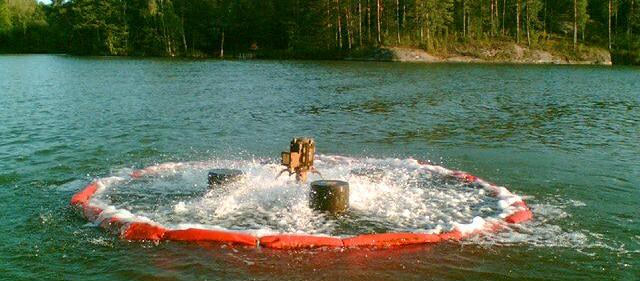Lake Kakskerta in Turku
The initial situation
The condition of the Lake Kakskerta has worsened over the past decades, mainly due to nutrients produced by agriculture and housing. The lake has been restored using aeration already since 1987.
The advisory board and protective society of Lake Kakskerta decided to improve aeration in the lake. It was verified that the nutrients contained in the basal sediment would be able to become released and re-access the waterway, if aeration is not managed efficiently in the depressions of the lake. At the same time, there was a request for an aeration system that would not disturb the stratification of the lake and therefore not bring nutrients from the depths of the surface.
After competition bids were submitted, a decision was made to commission the Waterix AIRIT 70 aerators. Justifications for selection were the sufficient attainment of oxidising ability, maintaining and preserving summertime stratification, the device’s low noise level, as well low operation and service costs. Due to the important recreational value of the Lake Kakskerta, the comparison of alternatives also had to give consideration to safety issues. Using the new aerator type in wintertime, the open area of water forming in the ice remains small and easy to notice. The open pool surrounding the aerator will have an approximate diameter of three metres. The outer edge of the pool will have a “boom” that will make the open water very distinct from the ice covering of the lake.
Implementation
Two AIRIT 70 aerators were installed over a two-day period into Lake Kakskerta in August 2006. The aerators drew water from depths of 12 meters and return the aerated water back to the metalimnium in less than ten meters. Downflow was performed using the pressure pipe connected to Waterix’s new AIRIT 70 device, where the aerated colder bottom layer water uses gravity to flow back below the middle layer, thereby avoiding mixing the stratification present in depressions.

 en
en  fi
fi fr
fr sv
sv